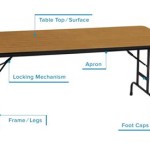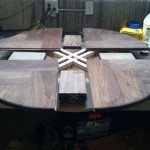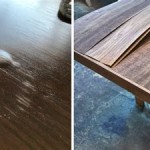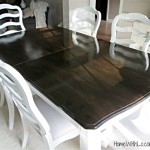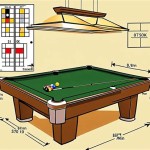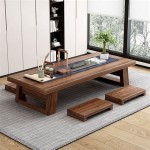Coffee Table Set Of 3: A Comprehensive Guide
A coffee table set of 3 is a furniture arrangement comprising a primary coffee table and two smaller accent tables, often designed to complement each other aesthetically and functionally. This ensemble provides a versatile and coordinated solution for living room spaces, offering a unified design theme and adaptable surfaces for various needs. The arrangement can contribute significantly to the overall aesthetic appeal and functionality of a living area. Understanding the nuances of selecting and utilizing such a set involves careful consideration of material, style, size, and spatial arrangement.
The concept of a coffee table set evolves from the desire for a cohesive and multi-functional furniture arrangement. Instead of sourcing individual tables that might clash or lack thematic consistency, a set offers a pre-arranged solution that simplifies the interior design process. The smaller tables can serve as end tables next to sofas and chairs, or they can be clustered around the main coffee table for a layered and visually appealing effect. The flexibility of the arrangement makes it suitable for both small apartments and larger living rooms, adapting to different spatial constraints and design preferences.
The following sections will delve into the critical aspects of choosing, utilizing, and maintaining a coffee table set of 3, providing a comprehensive understanding of its benefits and considerations.
Key Point 1: Design and Material Considerations
The design and material of a coffee table set are paramount in determining its aesthetic appeal and durability. The choice of material influences not only the overall look but also the longevity and maintenance requirements of the furniture. Common materials include wood, metal, glass, and combinations thereof, each offering distinct advantages and disadvantages. Ultimately, the design and material choices should complement the existing décor and meet the practical needs of the user.
Wood: Wood is a classic and versatile material offering a wide range of options, from solid hardwood to engineered wood products. Hardwoods like oak, maple, and walnut provide exceptional durability and a timeless aesthetic, often featuring intricate grain patterns and rich colors. Engineered wood, such as plywood or MDF (medium-density fiberboard), offers a more affordable alternative while still providing a sturdy surface when properly constructed. Wood coffee tables can be stained, painted, or left with a natural finish, allowing for customization to match various design styles. The primary drawback of wood is its susceptibility to moisture damage, requiring regular sealing and careful maintenance to prevent warping or cracking.
Metal: Metal coffee tables offer a contemporary and industrial aesthetic, often featuring sleek lines and minimalist designs. Common metals used include steel, iron, and aluminum. Steel provides excellent strength and durability, while aluminum is lightweight and corrosion-resistant. Metal tables can be powder-coated in various colors or left with a raw, industrial finish. The inherent strength of metal makes it a durable option, resistant to scratches and dents. However, metal can be prone to rust if not properly treated, particularly in humid environments. Furthermore, metal tables can sometimes feel cold and impersonal, requiring the addition of soft elements like rugs and cushions to create a warmer atmosphere.
Glass: Glass coffee tables offer a modern and airy aesthetic, allowing light to pass through and creating a sense of spaciousness. Tempered glass is the preferred choice due to its increased strength and safety properties. Glass tables can feature clear, frosted, or tinted surfaces, offering varying degrees of transparency and visual interest. The smooth surface of glass is easy to clean and maintain, resistant to stains and spills. However, glass is susceptible to scratches and fingerprints, requiring frequent cleaning to maintain its pristine appearance. Additionally, glass tables may not be suitable for households with young children due to the potential for breakage.
Combinations: Many coffee table sets incorporate combinations of materials to achieve a unique aesthetic and functional balance. For example, a coffee table may feature a wooden top with metal legs, combining the warmth of wood with the strength of metal. Another common combination is a glass top with a wooden or metal frame, offering a blend of modernity and natural elements. Such combinations allow for greater design flexibility and can create visually interesting contrasts.
The design of the tables also plays a crucial role. Options range from sleek and minimalist designs to more ornate and traditional styles. The shape of the tables can vary from rectangular and square to round and oval, each contributing to a different spatial dynamic. Furthermore, features such as storage shelves or drawers can enhance the functionality of the set, providing convenient space for magazines, remote controls, and other living room essentials.
Key Point 2: Size and Spatial Arrangement
The size and spatial arrangement of a coffee table set of 3 are critical factors in ensuring its functionality and visual harmony within a living room. Selecting the appropriate size involves considering the dimensions of the room, the seating arrangement, and the intended use of the tables. The spatial arrangement refers to how the tables are positioned relative to each other and the surrounding furniture, influencing both the flow of movement and the overall aesthetic balance.
Size Considerations: The primary coffee table should be sized appropriately in relation to the sofa and chairs. A general guideline is to choose a coffee table that is approximately two-thirds the length of the sofa. The height of the table should also be considered, ideally being the same height as the sofa cushions or slightly lower. This ensures that the table is easily accessible for placing drinks, books, or other items. The smaller accent tables should be proportioned accordingly, typically being smaller in both length and height than the primary table. These tables can serve as end tables or be positioned around the coffee table for a layered effect.
Spatial Arrangement Options: The arrangement of the coffee table set can significantly impact the flow and feel of the living room. One common arrangement is to place the primary coffee table in front of the sofa, centered on the seating area. The smaller accent tables can then be positioned on either side of the sofa, serving as end tables. This arrangement provides convenient surfaces for drinks and lamps, creating a balanced and symmetrical look. Another option is to cluster the accent tables around the coffee table, creating a more informal and layered effect. This arrangement is particularly suitable for larger living rooms, providing ample surface area for entertaining. In smaller spaces, the accent tables can be used independently in different areas of the room, providing flexibility and maximizing functionality.
The shape of the tables also influences the spatial arrangement. Rectangular and square tables tend to work well in more formal settings, providing a clean and structured look. Round and oval tables soften the edges of a room, creating a more inviting and relaxed atmosphere. When arranging the tables, it is important to consider the traffic flow within the room, ensuring that there is ample space for people to move around comfortably. Avoiding overcrowding the space is crucial for maintaining a sense of openness and preventing the room from feeling cluttered.
The placement of the coffee table set should also consider any existing focal points within the room, such as a fireplace or a large window. Aligning the tables with these focal points can create a sense of balance and harmony, enhancing the overall aesthetic appeal of the space. Furthermore, the use of rugs can help to define the seating area and anchor the coffee table set, creating a cohesive and inviting environment.
Key Point 3: Functional and Aesthetic Integration
The successful integration of a coffee table set of 3 involves balancing its functional purpose with its aesthetic contribution to the living room. The set should not only provide convenient surfaces for everyday use but also enhance the overall design and atmosphere of the space. Achieving this requires careful consideration of the set's style, color, and any additional features that contribute to its functionality.
Style and Color: The style of the coffee table set should complement the existing décor of the living room, creating a cohesive and harmonious look. Whether the room features a modern, traditional, industrial, or bohemian style, the set should align with these design principles. The color of the tables is another important consideration, affecting the overall mood and feel of the space. Neutral colors like white, gray, and beige provide a versatile backdrop, allowing other elements in the room to take center stage. Bold colors like blue, green, or red can add a pop of visual interest, creating a more vibrant and dynamic atmosphere. The color of the tables should harmonize with the existing color palette of the room, avoiding clashes or imbalances.
Additional Features: Many coffee table sets incorporate additional features that enhance their functionality. Storage shelves or drawers provide convenient space for storing magazines, remote controls, and other living room essentials, helping to keep the space organized and clutter-free. Lift-top coffee tables offer a versatile surface for working or dining, providing a comfortable and ergonomic option for activities that require a raised surface. Nesting tables offer a space-saving solution, allowing the smaller tables to be stored beneath the primary table when not in use. These additional features can significantly enhance the practicality of the coffee table set, making it a more valuable addition to the living room.
Accessorizing and Styling: The way a coffee table set is accessorized and styled can further enhance its aesthetic appeal. Decorative items such as vases, candles, books, and trays can add visual interest and personality to the tables. The arrangement of these items should be balanced and intentional, avoiding clutter and creating a cohesive look. The use of textiles, such as runners or placemats, can add texture and warmth to the tables, softening their appearance and creating a more inviting atmosphere. The choice of accessories should complement the style of the tables and the overall décor of the room.
Ultimately, the successful integration of a coffee table set of 3 involves creating a balance between functionality and aesthetics. The set should not only provide practical surfaces for everyday use but also enhance the overall design and atmosphere of the living room, creating a comfortable and inviting space.

Living Room Coffee Tables Set Of 3 Round Nesting With White Marble And Gold Metal Iron Base Nest Table Decor Centre

Mcc Direct Nest Of 3 Coffee Tables Natural Diy At B Q

Uttermost Kasai Antique Gold Nesting Coffee Tables Set Of 3 646r0 Lamps Plus

Circular 3 Piece Coffee Table Set Home Centre Uae

Wallich Glass Nesting Coffee Table Set Of 3 Finn Avenue

Coffee Table Carly Set Of 3 Furnwise

Dixon 3 Piece Coffee Table Set Espresso Quick Available At Unique Furniture Dallas Acworth

Circle Coffee Table Set Of 3 Home Centre Uae

Gap Home Modern Round Nesting Coffee Tables Set Of 3 White Blue Grey Com

Marley Gold Cross Over And Glass 3 Piece Coffee Table Set Tufted Nailhead Furniture Warehouse


